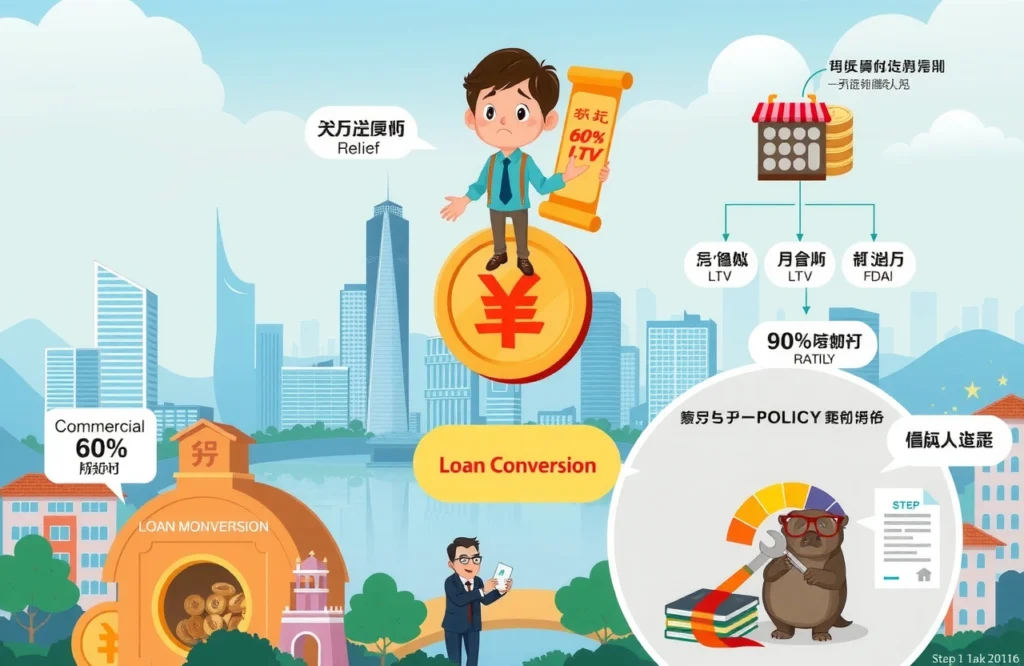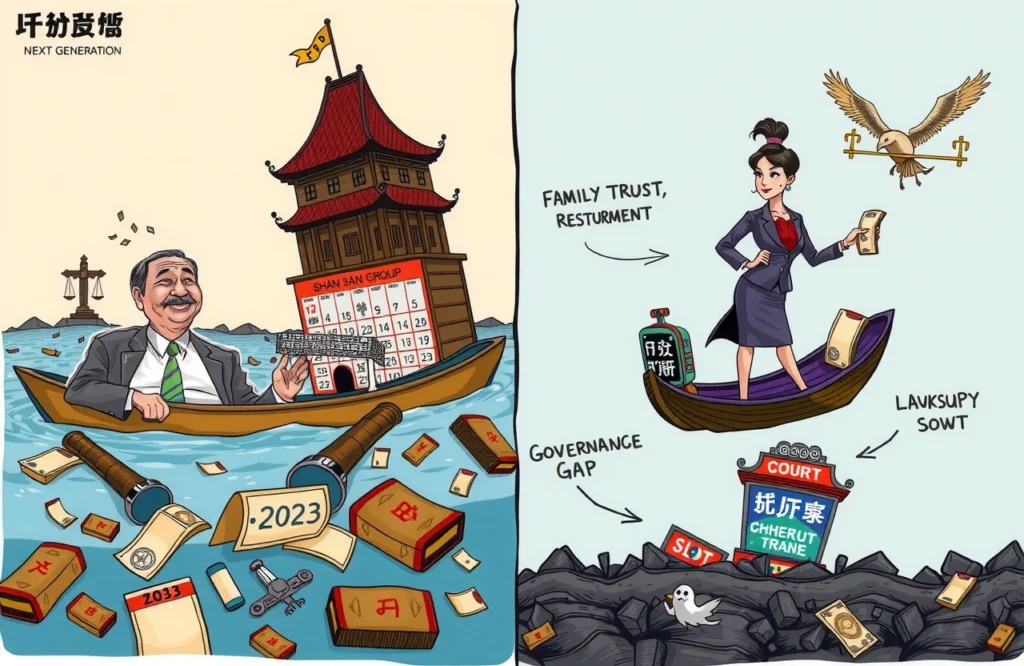Summary
- Hangzhou generated RMB 122.8 billion from land auctions in H1 2025 – nearly equaling Shanghai’s total and surpassing Beijing
- Following October 2024’s elimination of new home price caps, luxury projects now sell at 20-40% premiums, with multiple properties achieving instant sell-outs
- Core area land premiums reached 68%, creating record-setting plots like the RMB 54,000/sq m Qianjiang plot
- The market shift prioritizes quality developments while accelerating differentiation between core and peripheral zones
Hangzhou’s Land Sales Revenue Matches First-Tier Cities
During the first half of 2025, Hangzhou accomplished an unprecedented feat in China’s real estate landscape. The city’s explosive land sales surge generated RMB 122.8 billion through transactions, positioning its auction revenues within striking distance of Shanghai’s RMB 127.3 billion and decisively overtaking Beijing’s RMB 112.1 billion, according to CRIC Research Center data. This remarkable performance – capturing 99% of Hangzhou’s entire 2024 land income in just six months – signals profound shifts in regional economic hierarchies.
The land sales surge momentum intensified during June’s closing auctions when six premium residential plots sold at uniformly high premiums. A prime Qianjiang Century City parcel ignited frenzied bidding among developers, culminating in a record 68% premium after 98 rounds. Zhejiang-based developer Jindi Group ultimately secured this landmark plot at RMB 54,000 per square meter, dethroning Poly Group’s previous RMB 51,600/sq m benchmark set just two months earlier.
Breaking Down the Record Figures
Shell Research Institute data reveals 68 residential-commercial plots transacted during this period, totaling RMB 116 billion in municipal revenue. Analyzing transaction patterns exposes stark market stratification: geographically central plots commanded average premiums exceeding 39%, while peripheral lower-density parcels attracted modest competition. This land sales surge highlights strategic governmental tilting toward premium urban zones.
Shell Research Institute Director Shangguan Jian (上官剑) observed: “High-value core parcels dominated supply, fueling repeated premium records while peripheral areas see cooling interest. As these costly projects materialize, market acceptance of evolving pricing structures faces crucial tests.”
Comparative Analysis Against Major Hubs
- Shanghua ranking: Shanghai led at RMB 127.3B, Hangzhou ranked second at RMB 122.8B
- Transaction mechanics: Included auctions and negotiated transfers for consistency
- Historical context: Hangzhou’s first-half collection nearly matched its 2024 total
New Pricing Paradigm Reshapes Market Dynamics
The catalytic trigger for this land sales surge occurred in October 2024 when municipal authorities abolished all new home price ceilings. This bold policy pivot ended artificial suppression that previously created二手房 price inversions. Market mechanisms now dictate property valuations, empowering developers to launch premium projects aligned with land costs and buyer aspirations.
Before deregulation, Hangzhou’s property boom thrived on arbitrage opportunities from government-mandated discounts on new units compared to existing housing stock. Frequent “10,000-person lotteries” for limited-price projects evaporated overnight. Developers swiftly recalibrated toward affluent upgraders, introducing projects featuring superior amenities, designs, and locations uncontrained by rigid pricing formulas.
Redefining Value Creation
Under the abolished system, developers focused predominantly on presale speed through cost optimization. Today’s high-priced land parcels necessitate quality differentiation justifying significant price premiums – an approach requiring architectural distinction and enhanced community planning. Marketing narratives shifted from projected appreciation to tangible lifestyle improvements.
Case Studies: Premium Properties Defy Pricing Gravity
The market witnessed extraordinary validation of Hangzhou’s land sales surge when luxury developments launched at massive premiums still achieved instant sellouts. Consider these May-June 2025 releases:
GreenCity Anzhi Dingxiang: Triple Sold-Out Triumph
Skepticism initially surrounded this Gongshu District pioneer because prior capped-price dwellings sold sluggishly despite RMB 47,000/sq m valuation ceilings. Defying expectations, Greentown launched unfettered Phase 1 at RMB 56,300/sq m – 20% above heritage caps – drawing 1,088 applicants for just 112 units. Subsequent batches escalated to RMB 58,700/sq m and finally RMB 60,000/sq m, culminating in complete sell-through within 45 days.
High-End Portfolio Performance
- China Resources Yunjing Wenhua Xuan: Sold Phase 1 units 20% above previous caps despite RMB 45,000/sq m pricing
- Jin Shang Wanxiang Mansion: Angel Plot premium hotel apartments sold out despite 40% hikes to RMB 65,600/sq m
- Hangxufu: Achieved same-day sellout with 13% premium over historic zone caps
Developer Strategies and Buyer Profiles Evolve
Pursuing premiums amid this land sales surge necessitated fundamental realignment among builders. Previously omnipresent entry-level condominiums vanished as developers chased profitable differentiation.
Quality-First Development Approach
Frontloading premium materials and design enhancements became essential tactics following expensive acquisitions. Jindi Group’s Qianjiang plot demands luxury positioning surpassing nearby competitors through amenities like waterfront views and designer interiors.
A Hangzhou industry insider explains: “Thanks to abundant core plots in auctions, developers concentrate on upscale units maximizing per-unit profits rather than volume. Buyer demographics transformed – speculative investors diminished while affluent owner-occupiers seeking tangible upgrades expanded.”
Changing Consumer Motivations
- Fading investissement focus: Reduced perception of quick flipping opportunities
- Emphasis on life quality: Buyers accept premiums for architectural distinction
- Financing advantages: Wealthier buyers minimize mortgage dependencies
Outlook: Sustainability Concerns Emerge
While the land sales surge showcases remarkable resilience, experts monitor sustainability indicators. Rising mortgage burdens challenge middle-class affordability thresholds absent comparable income growth. Differentiation intensifies between artifacts near premium amenities versus remote zones.
Future Price Trajectory
Imminent projects acquired during peak land premiums must uphold luxury positioning, sustaining near-term momentum for premium sectors. Market-wide stability depends critically on developers’ rational pricing discipline balancing ambitious acquisition costs against buyer tolerance ceilings.
Shifting Market Requires Forward-Looking Strategy
Hangzhou’s experiment demonstrates Chinese cities’ capacity for market-driven revitalization through deregulation when anchored by economic vitality. Core principles emerged:
- Abandoning price controls generated developer confidence accelerating premium investing
- Wealthy owner-occupiers form resilient foundations beyond speculative surges
- Geographic stratification magnifies protection for prime portfolios against broader fluctuations
For prospective buyers and investors, meticulous research confirms tremendous opportunities within Hangzhou’s ascending districts. Prospective homeowners should prioritize configuration suitability regardless of sales velocity claims. Developers must calibrate ambitions staying attentive to genuine demand fundamentals beyond temporary enthusiasm.


















